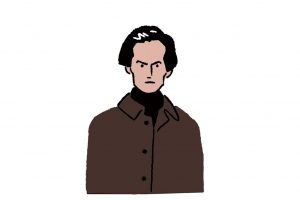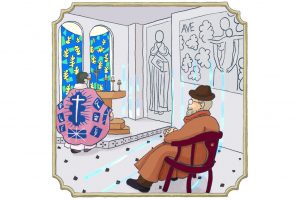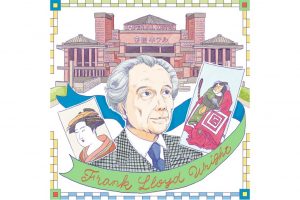Dizzying Changes in Style
Kishida was inspired by Vincent van Gogh and Paul Gauguin, whose work he came upon in 1911 in the magazine Shirakaba (White Birch), and later by Albrecht Dϋrer and other Northern Renaissance painters who sought realistic representation in art. In 1916, when at 25 he was diagnosed with a lung disease, he began working indoors on still life paintings, setting out on a unique path that would unite both shajitsu (realism) and a mysterious uchinaru bi (inner beauty). In his later years, Kishida came to be inspired by the distorted faces and bodies in sogenga (Chinese painting of the Sung and Yuang dynasties) and the flat faces of early hand-drawn ukiyo-e woodblock paintings. This appeal he dubbed derori—the beauty of the grotesque and mysterious.
Ryusei Kishida
Examining artists
No.024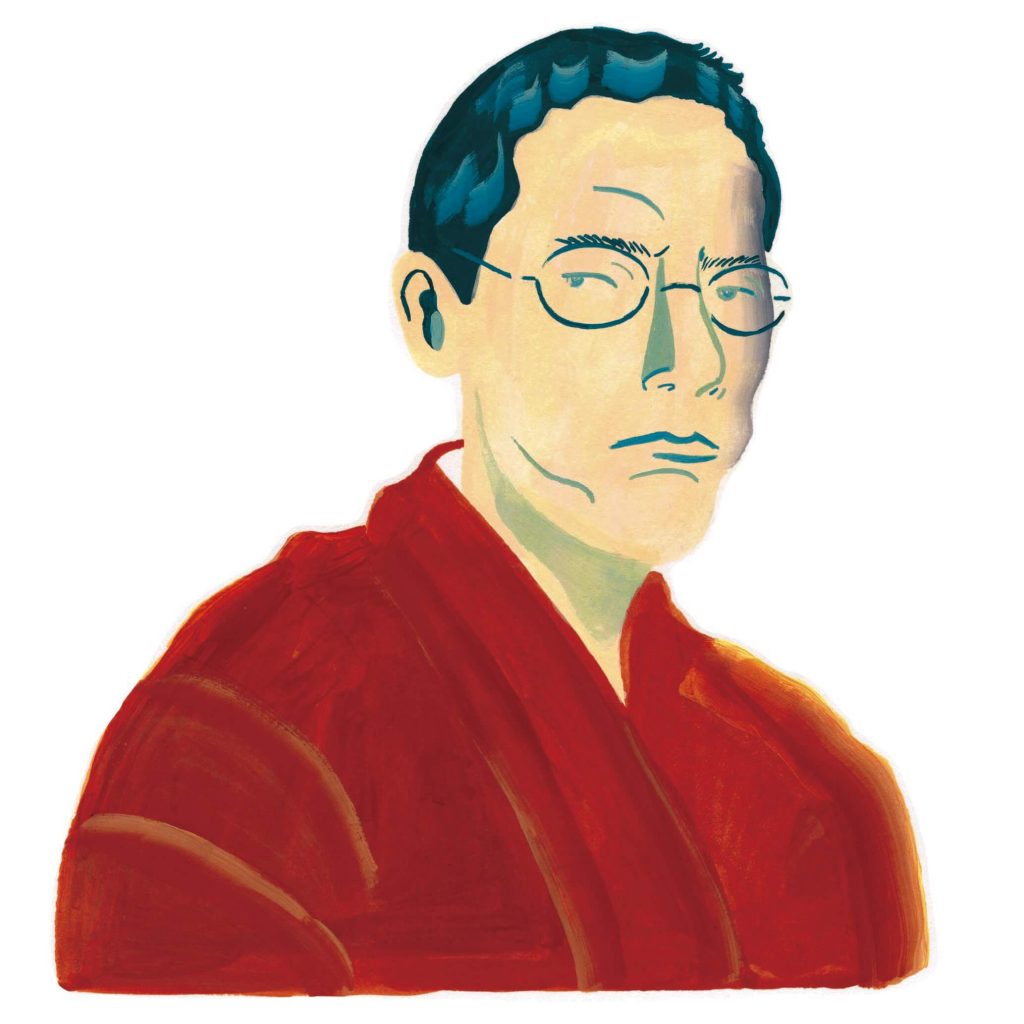
A conspicuous force in yoga (Western-style Japanese painting) during the Meiji, Taisho, and Showa eras, Ryusei Kishida was a solitary figure, greatly influenced by modern French painting and focused on developing his own style of yoga painting. Following a path that was anything but straight, Kishida gradually found his unique style as he moved closer to the secrets of the world of painting.
Illustration: Sora Toyoshima
Ryusei Kishida (1891-1929)
Born in the Ginza district of Kyobashi-ku, Tokyo, Ryusei Kishida was the fourth son (ninth of 14 children) of journalist and businessman Ginkou Kishida. During his short life of 38 years, he sought out a style of his own that would give life to mysterious paintings in profound colors and detail. His most widely known works, including Road Cut Through a Hill (1915), an Important Cultural Property, as well as numerous portraits of his daughter Reiko, are featured in art textbooks.
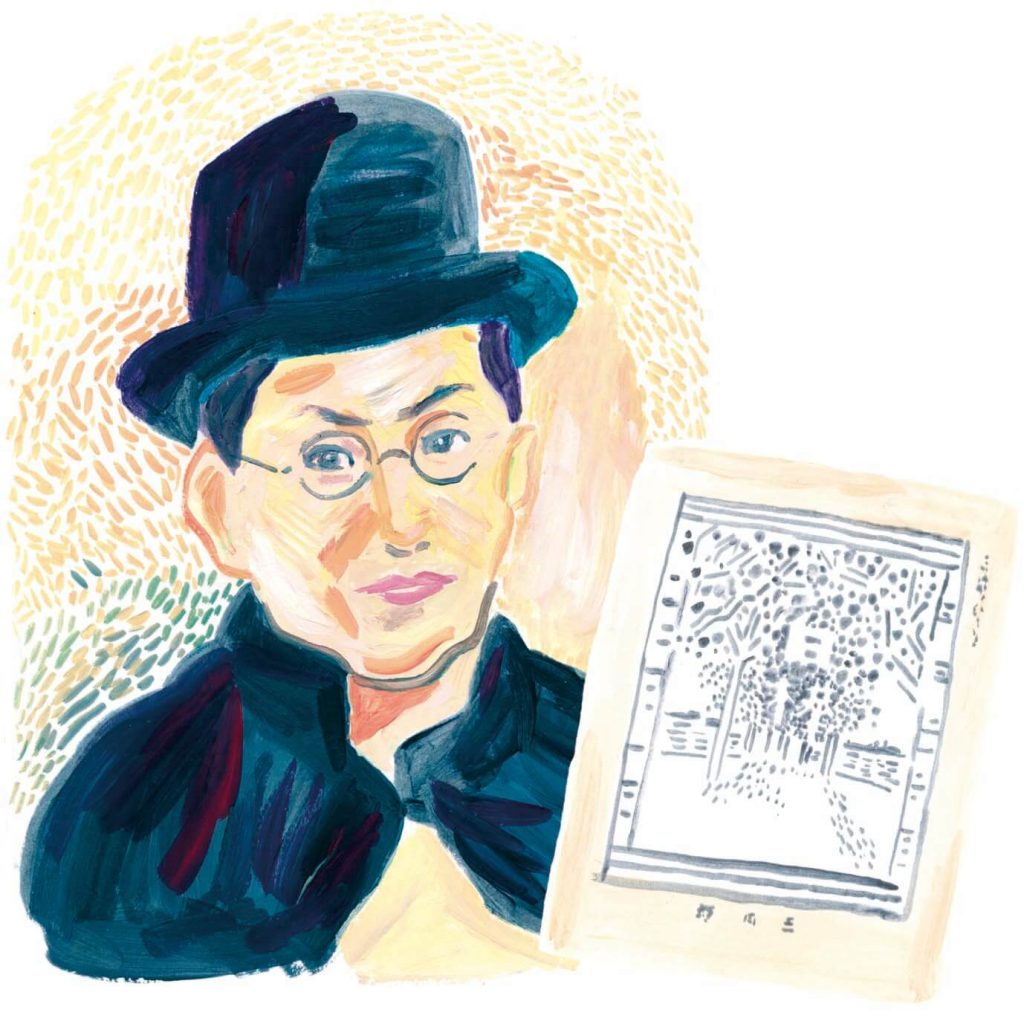
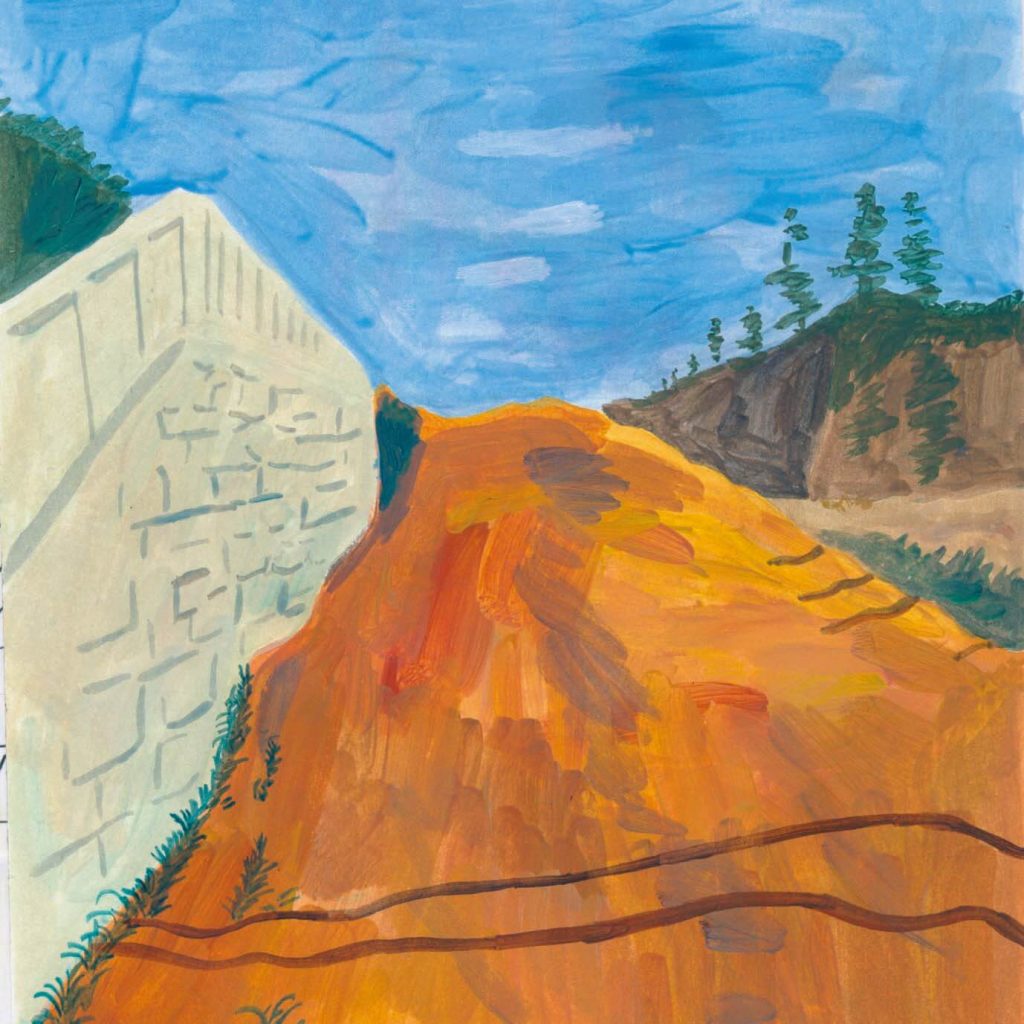
Ferocity and Affection
With each iteration of his style, Kishida found a new beauty as he continued his search for his own unique expression. He found it difficult to keep control of his fierce artistic passion, losing his temper at times as he lamented, “My work is not progressing. This does not work!” At the same time, Kishida had a deeply affectionate personal side, as well, writing to his wife during a two-week separation while he was in the hot spring cure, “I am so lonely without you.”
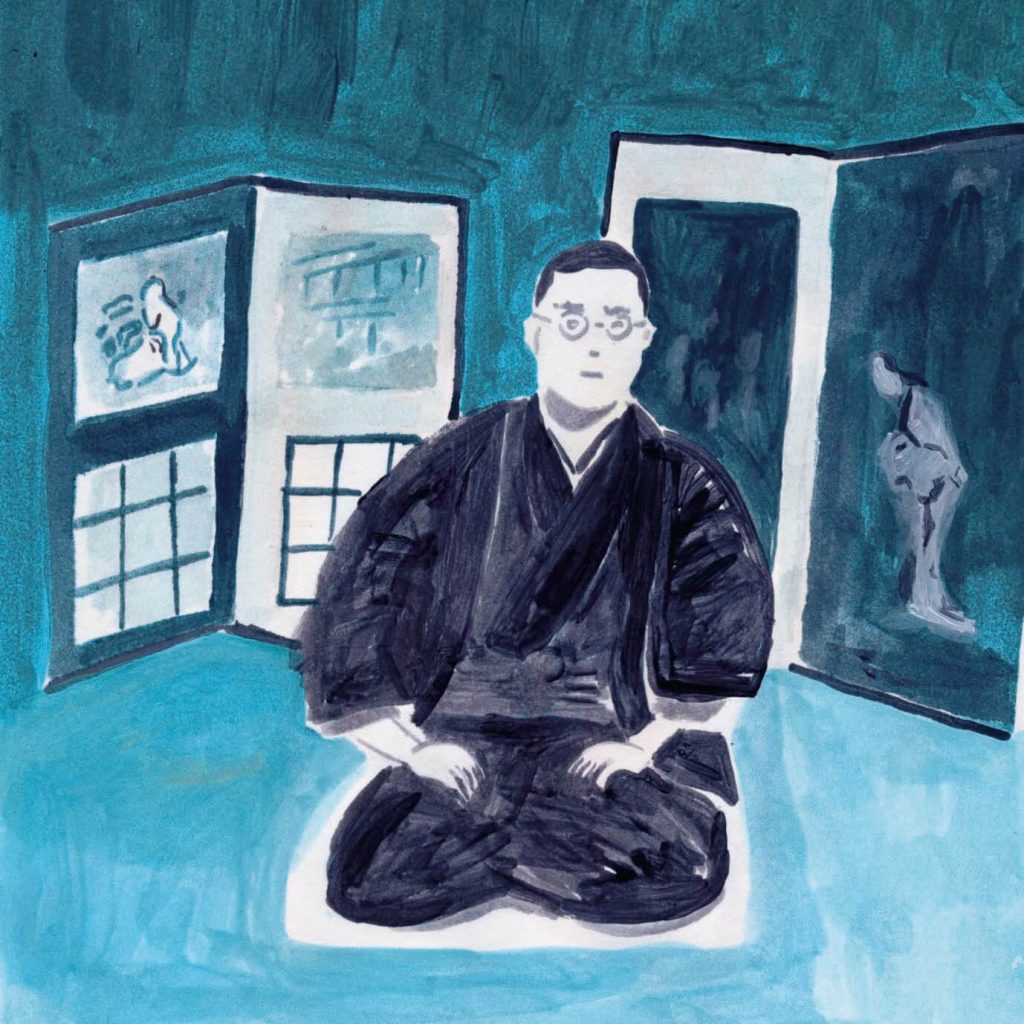
A Transformational Muse in Reiko
The first time his daughter Reiko modeled for an oil painting was in 1918 when she was five years old. From then on, Kishida focused on portraits of Reiko to develop his ideal mode of expression. With a deep respect for her father as a painter, Reiko began herself to paint. In his daughter, who also showed artistic talent early on and whose views on art followed the same path as his, Kishida saw himself. It was this deep love and mutual understanding between father and daughter that undoubtedly led to his series of more than 100 portraits of Reiko.
Cooperation: Tokyo Station Gallery
Japanese original text: Yasuna Asano
Sora Toyoshima
Illustrator. Born 1980 in Ibaraki Prefecture. Graduated from PALETTE CLUB SCHOOL.
Works with both Japanese and overseas clients, mainly in areas of magazine, advertisement, websites, and apparels.
http://soratoyoshima.net


